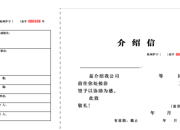英语教学设计(3)
时间:2021-08-31英语教学设计6
一、教材依据
本课时教学是依据小学英语PEP教材四年级上册第四单元A部分 Let’s learn和Let’s do设计而成。
二、设计思想
这个课时的教学目标本来主要是:1、让学生掌握单词study, bathroom, bedroom, living room,kitchen听说与认读。2、能说唱“Let’s do”部分的内容并能做出相应的动作。本人根据学生的实际程度和课程理念出发,又增加了两个教学目标:1、能听说词汇watch TV, read a book, have a snack, take a shower, have a sleep。2、完成一个交际任务:介绍自己的家。采用了新课标倡导的“任务型”教学途径。 在教学中,新单词的教学都应在一定的语言情境中呈现,并结合学生已经学过的语言结构、富有韵律和动感的“Let’s do”以及学生所喜好的歌曲和游戏活动进行大面积操练,巩固新语言,最后给出新语言框架:This is my home. You can see a living room, a bedroom, a …. I can watch TV in the living room, I can read a book in the study …. Welcome to my home!,通过老师示范、尖子生示范,让学生学会介绍自己的家,并在交际活动中活化新语言,完成学习任务。
三、教学目标
1.能听、说、认读单词study, bathroom, bedroom, living room和kitchen,并能在实际情景中加以运用。
2.能听懂并发出一些指令,如:Go to the living room/ …. Watch TV. Read a book. Have a snack. Take a shower. Have a sleep.
3.能用下列语言简单介绍自己的家:This is my home. You can see a living room, a bedroom, a …. I can watch TV in the living room, I can read a book in the study ….
4.培养学生对家的热爱。
四、教学重点
1.能听、说、认读单词study, bathroom, bedroom, living room和kitchen,并能在实际情景中加以运用。
2.能用简单的语言介绍自己的家,培养学生对家的热爱。
五、教学难点
能理解并会说Have a snack. Take a shower. Have a sleep.等语言,并能用下列语言简单介绍自己的家:This is my home. You can see a living room, a bedroom, a …. I can watch TV in the living room, I can read a book in the study ….
六、教学准备
1.教师制作多媒体课件。
2.学生每人准备一张自己家的平面图。
3.教师准备study, bathroom, bedroom, living room和kitchen的单词卡片。
七、教学过程
Step1: Warm-up(热身导入)
1.介绍话题
T: Boys and girls, look at the screen. Today, our topic is “My home”. Who can read? (ask some Ss to read the topic)
In this class, we’re going to talk about “home”, everybody here should learn to introduce your home to us. OK?
Ss: OK.
2.Sing a song In the classroom
T: First, let’s sing a song, OK?
Ss: OK.
Step2: Presentation(新课呈现)
1.教学living room
(唱完歌曲,多媒体出示一幅living room的图片。)
T: Is this a classroom?
Ss: No.
T: What is it?
Ss: Living room.
T: Yes. This is a living room. Follow me:living room,
Ss: (read one by one)
T: What can you see in the living room?
Ss: I can see a table, a sofa, a …, a TV.
T: Let’s watch TV, OK?
Ss: OK. living room.
T:(多媒体出示一幅TV图。) Do you like watching TV?
S1: Yes.
T: Let’s go to the living room and watch TV.
S1: OK.
T: Go, go, go. Go to the living room, watch TV. Let’s go together. S1: Go, go, go. Go to the living room, watch. TV.
2.教学study
(多媒体自动切换成study的图片。)
T: Is this a living room?
Ss: No.
T: Oh, we’ve got the wrong way. What is it?
Ss: A study.
T: Yes, this is a study. Follow me: study,study.
Ss: (read one by one)
T: What
can you do in the study?
Ss: Read a book.
T: (多媒体出示短语read a book。) Do you like reading books? Ss: Yes.
T: Let’s go to the study and read a book. Go, go, go. Go to the study, read a book.
3.教学kitchen
T: Oh, I’m tired. I feel a little hungry. I want to have some snack. (教师拿
出一些小点心,并吃上一块。) Do you want to have a snack? S1: Yes.
T: Here you are. Have a snack. Who want to have snack?
Ss: I want to have a snack.
…
T: Oh, snacks are gone. Where can we get some?
Ss: Go to the kitchen.
T: (多媒体出示kitchen图片和单词) Follow me:kitchen, kitchen. Ss: (read one by one)
T: Let’s go to the kitchen, have some snack. Go, go, go. Go to the kitchen, have a snack.
4.教学bedroom
T: (多媒体出示一些家具和小电器。) Look at these things. Can you help them get home?
Ss: Put the TV in the living room./ Put the ….
T: Oh, where should the bed go?
Ss: Go to the bedroom.
T: (多媒体出示bedroom图片和单词。) Follow me:bedroom,bedroom.
Ss: (read one by one)
T: Let’s sing a song “My bedroom”, OK?
Ss: OK.
英语教学设计7
Ⅰ. 定义
定语从句,起形容词的作用,在句中常用来修饰名词或代词。被修饰的词称为先行词,引导定语从句的词称为关系词, 关系词的作用一是放在先行词与定语从句中间起引导作用;二是在意义上代替先行词,并在从句中充当一个成分。其中关系代词:who, whom, whose, which, that, as;关系副词:when, where, why。
eg. She is the girl who sings best of all.
The pen which my uncle gave me is missing.
He lives in a house whose windows face south.
The factory where my father works is in the east of the city.
Perhaps the day will come when people will be able to breathe clean air in cities.
Ⅱ. 关系代词
1.先行词是人,作主语,关系代词用who, that
eg. He is a man( ) never leaves today’s work till tomorrow.
The boy ( ) is standing there is my cousin.
2. 先行词是人,作宾语,关系代词用 whom, who, that,
eg. Here is the man ( ) you’ve been expecting to meet.
The man ( ) you met yesterday is Mr. Smith.
3. 先行词是物,作主语,关系代词用which, that
eg . The train ( ) has just left is for Guangzhou.
Children like to read books ( ) have wonderful pictures.
4. 先行词是物,作宾语,关系代词用which, that,或省略
eg. The book ( ) you borrowed yesterday is really interesting.
The pen ( ) my uncle gave me is missing.
5. 先行词是人、物,作定语,关系代词用whose
eg. He is the professor ( ) name was Jackson.
China, ( ) population is the largest in the world, is developing very fast.
Ⅲ. 关系副词
1.先行词是表示时间的名词,在定从中作时间状语,关系代词用when
eg. I can’t remember the date ( ) he went abroad.
I’ll never forget the day ( ) I joined the army.
2.先行词是表示地点的名词,在定从中作地点状语,关系代词用where; 其中注意表示抽象概念的地点名词,如,situation、stage、degree、point等表示方面或程度时,也需用where
eg. This is the village ( ) Uncle Wang once lived.
They have reached the point ( ) they have to separate with each other.
He’s got himself into a dangerous situation ( ) he is likely to lose control over the plane.
3. 先行词是reason,在定从中作原因状语,关系代词用why
eg. I don’t know the reason ( ) he was late.
None of us know the reason ( ) Tom was absent from the meeting.
4.引导定语从句的关系副词也可以用“适当介词 + which”来代替。
eg. October 1, 1949 was the day when ( = ) the People’s Republic of China was founded.
This is the factory where(= ) we worked a year ago.
I don’t believe the reason why (= ) he was late for school.
Ⅳ. 关系代词that & which的区别:
⒈ 只用that的情况
① 先行词为all, everything, anything, nothing, little, much等不定代词时。
eg. There is nothing ( ) can prevent him from doing it.
② 先行词被any, only, few, no, very, little 等修饰时。
eg. This is the very book ( ) I’m looking for.
③ 先行词被形容词最高级或序数词修饰时。
eg. The first place ( ) they visited in Guilin was Elephant Trunk Hill.
This is the best film ( ) I have ever seen.
④ 先行词既有人又有物时。
eg. He talked about things and persons ( ) they remembered in the school.
⑤ 先行词被the only, the very修饰时。
eg. Mr. Smith is the only foreigner ( ) he knows.
⑥ 句中已有who或which,为了避免重复时。
eg. Who is the man ( ) is standing beside Tom?
⒉ 不能用 that的情况:
① 引导非限制性定语从句;
eg. He had failed in the maths exam , ( ) made his father very angry.
② 介词 + 关系代词。
eg. This is the room in( ) my father lived last year.
Ⅴ. as引导定语从句时的用法(as 相当于that & which)
① as引导限制性定语从句通常用于the same … as, such … as结构中。
eg. This is the same book ( ) I lent you.
Such machines ( ) are used in our workshop are made in China.
② as引导非限制性定语从句既可放在主句之前,也可放在主句之后,位置灵活,用来修饰整个句子。通常用下列句型:as is known to all, as is said, as is reported, as is announced, as we all know, as I expect 等。
eg. ( ) I expected, he got the first place again in this mid-term examination.
Taiwan, ( ) we all know, belongs to China.
Ⅵ. 限制性定语从句和非限制性定语从句的主要区别:
限制性定语从句: 一般紧跟在先行词后面,不用逗号把从句与先行词分隔开来。使先行词的意思十分明确,成为特定的人或物,是句子中不可缺少的成分,少了它句子就会失去意义不能成立,或意思不清楚,不能说明问题。通常译为定语。
非限制性定语从句: 通常由逗号与句子其他成分隔开。只是对先行词作进一步的说明,没有它句子仍能成立,意思仍很清楚。通常译为并列的句子。
eg. I was the only person in our office ( ) was invited.(去掉定语从句,意思就不完整)
Tom’s father, ( ) is over sixty, still works hard day and night.(整个句子可分成两句来翻译)
Ⅶ. 分隔定语从句
即先行词与关系代词、副词之间被介词短语,同位语,谓语等分隔开来。
此种定语从句,在选择关系词时,要注意找准先行词。
eg. There is an expression in his eyes ( )I can’t understand.
I was the only person in my office ( ) was invited to the important ball.
I suggest you choose someone I think ( ) is very kind and friendly.











